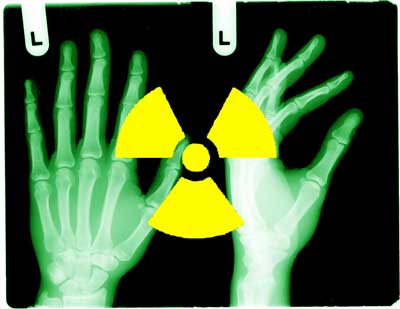Based on a study released by doctors at the Cincinnati Children's Hospital Medical Center, patients are being exposed less and less to radiation during CT scans due to a new technology that allows doctors to successfully control and manage radiation doses.
However, this one-of-a-kind software development has gone to diminish overall radiation exposure from CT scans by 37 percent, notes two new studies featured in the journal Radiology. The imaging software, which was produced and presently employed at Cincinnati Children's Hospital Medical Center, analytically calculates the lowest possible dose of radiation for a patient prior to the CT scan cites Radiology Quality and Safety Director at the Medical Center and Principal Architect of the Technology, and lead author, David Larson, MD.
When use concurrently with present CT scanners, the new software allows radiologists to successfully control and manage radiation doses that all hinge on the size of each patient, while still generating diagnostic quality images. The software also gives radiologists the appropriate scanner settings prior to the start of the CT scanning process; leading to monitors scanning every inch with the assurance of the proper dosage in use.
"Radiologists have had to rely on a trial-and-error approach to optimizing CT radiation dose. This model allows us to more accurately walk that fine line of precise dosing. Even though modern CT scanners adjust the dose based on the size of the patient, they do not necessarily adjust it to the exact image quality radiologists need. This way we can not only specify what image quality and dose are appropriate, but we can also predict the scanner settings needed to achieve those levels,” said Larson.
When it came down to the quality-improvement segment of the study, which screened more than 800 patients, Larson and his team requested radiologists to rate the CT images to conclude whether a suitable amount of “noise,” or undesired arbitrary signals were present in the scan.
"Image quality is what determines the appropriate radiation dose - the challenge is to find the threshold where the dose is as low as possible, but the images are still clear," notes Larson. "The right balance results in images that may be a little noisy but are good enough to provide an accurate diagnosis."
Larson trusts this newly developed software can leave a huge mark on CT scans can be performed and adapted in pediatrics, as well as for adults.
"Image quality depends on patient size, not patient age. 58 percent of the examinations in our study were of adult-sized patients,” said Larson.
The utilization of CT scans has been producing a certain amount of alarm due to the high levels of radiation associated to them, averagely generating around 500 times more radiation than x-rays.











